5 tips for inventory management with barcode scanning
Inventory management with barcode scanning is essential in certain industries. Discover barcode scanning, its benefits, and how to implement it.

Henry Kivimaa
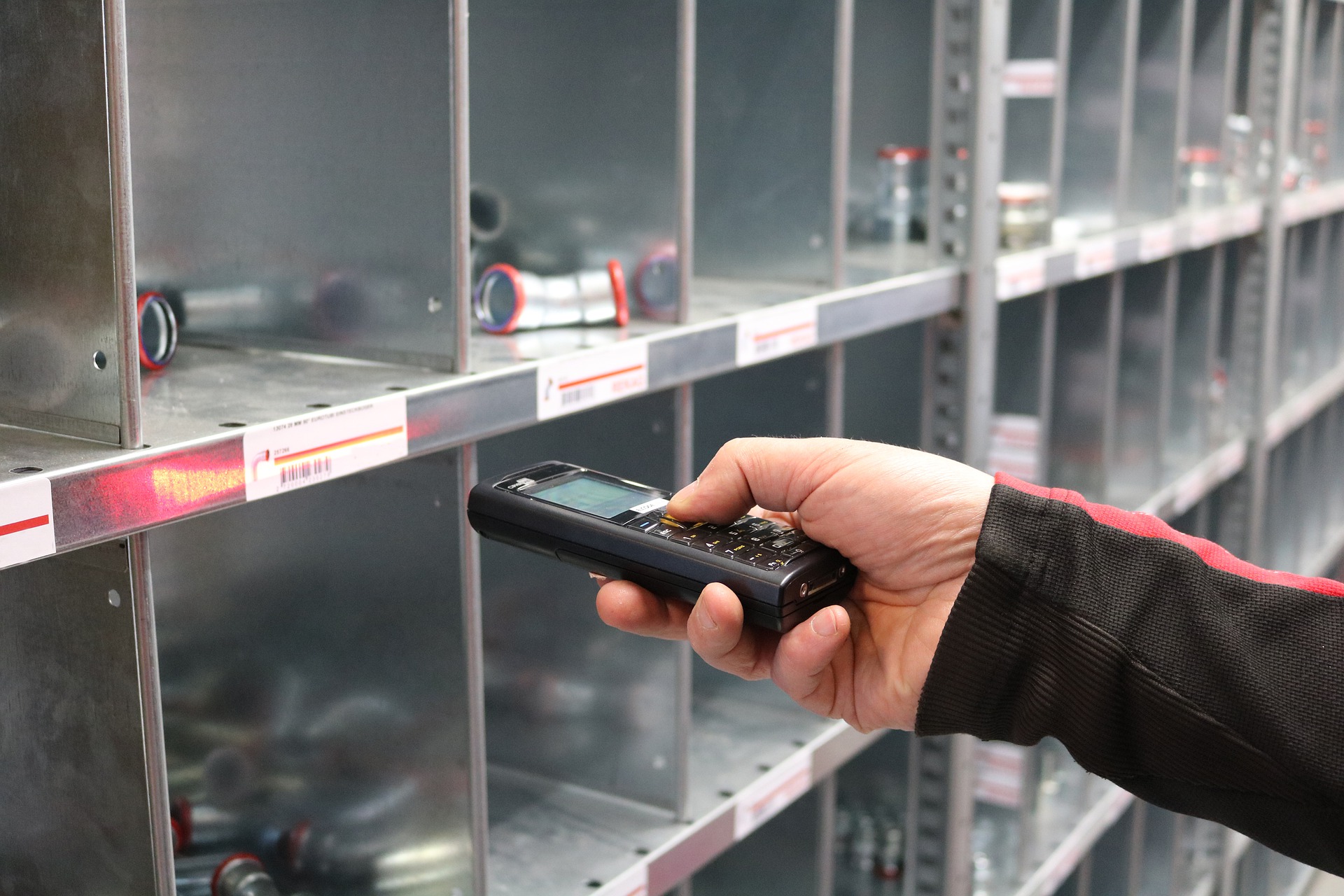
If you’re a manufacturer reaching the stage where pointing your finger at your inventory and counting it is losing its reliability, it might be time to consider beefing up your inventory management rules.
Introducing inventory management with barcode scanning — the quickest and most reliable way of monitoring your inventory movements.
Without barcodes, you’re at risk of miscalculating your stock and going into negative inventory or losing track of the expiration date of your items, which can have serious consequences for your business.
That’s why, in this article, we’re going to explore barcode management, how it can improve your business and what needs to be done for implementation.
What are barcodes?

Barcodes are a method of visually representing data in a machine-readable form to quickly identify items and track inventory.
However, inventory management with barcode scanning isn’t just for tracking products, it also allows you to implement them:
- In your storefronts as part of the purchase process
- In warehouses to track inventory or assign materials to an operation
- In your e-commerce, such as Shopify inventory
- Within your shipping process
- On invoices to assist in accounting
Traditionally, a barcode came in the form of a square or rectangular print containing a series of vertical and parallel black lines and white spaces of different widths. Once scanned, they translate and relay information to the user.
Barcodes come in two different forms:
- 1-dimensional (1D)
- 2-dimensional (2D), for example, QR codes
But what exactly is the difference between the popular choices of these two types of barcodes?
The different types of barcodes
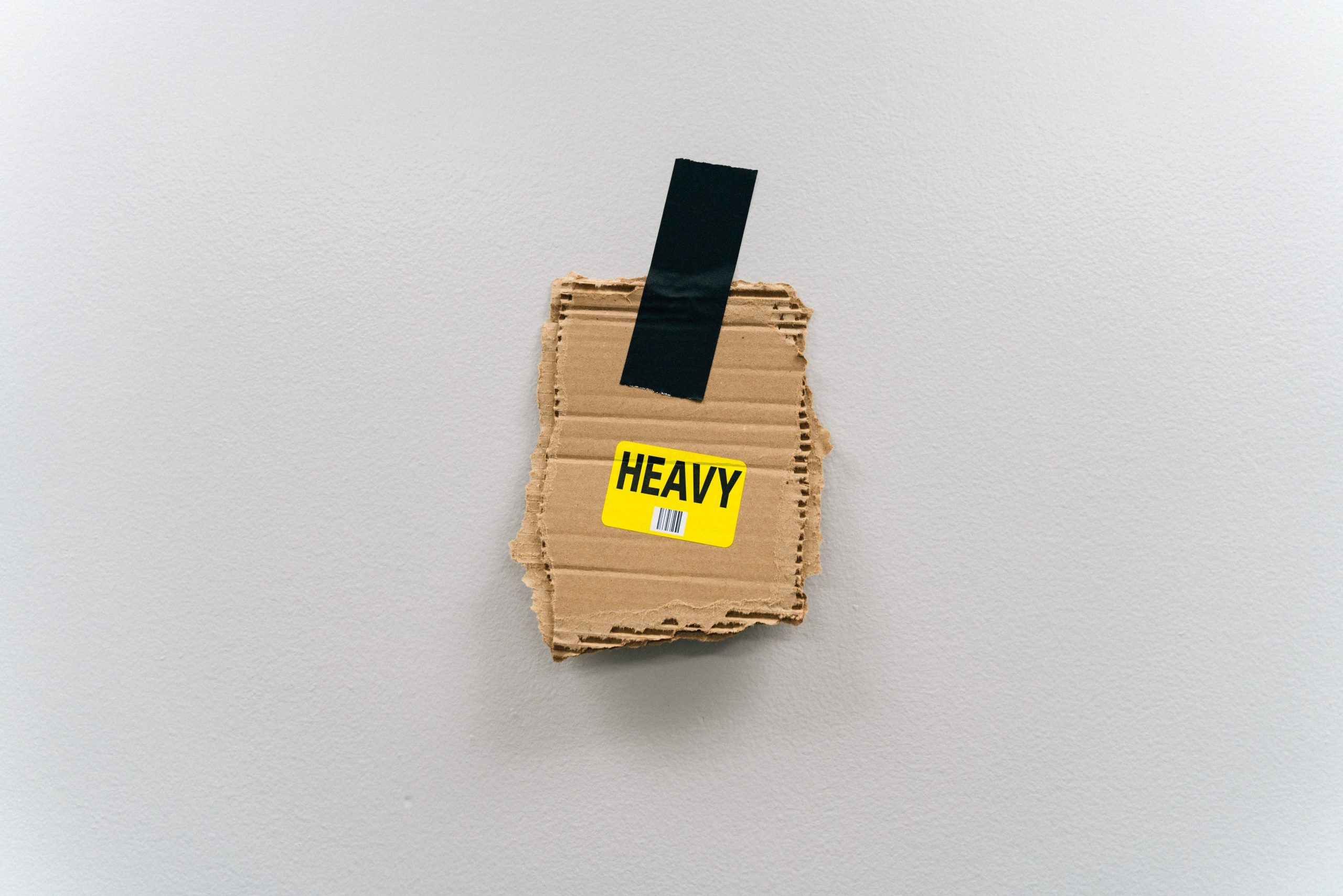
There are many different barcode types, different in visual as well as what kind of information they store and what their main use cases are.
One-dimensional (1D) barcode types
A 1D barcode is a sequence of vertical bars and spaces of varying widths used to represent a set of characters and store a limited amount of information.
EAN-8/EAN-13 and UPC-A/UPC-E
This is the international barcode standard for retail products. The code can be registered with GS1 (Global standard organization). GS1 assigns a dedicated company code that will be globally recognized.
They are mostly used on goods that a company is selling – in order to get a unique barcode for a specific item. GS1 will make sure the company code is unique and all the products can be traced back to their origin.
CODE 128/GS1 – 128
This code can hold more numbers. CS1 128 can also be registered with GS1, but the applications are broader for this code type. CODE 128 is widely used when items, processes, or activities are tracked internally, and its uniqueness is essential.
Some of the examples in which these codes can be used include:
- Identification of items internally
- Identification of batch numbers
- Identification of serial numbers
- Identification of resources
- Identification of operations
- Identification of the location of goods
In these cases, the barcode numbers should be generated so that they are always unique throughout the company – that’s why it’s important to find an MRP software that can perform this task.
Two-dimensional (2D) barcode types
Data Matrix and QR code – these are the most common 2D barcode types.
2D barcodes can hold far more information than 1D barcodes. For example, if there is a need to direct a user to a specific URL to see a Document or share contact details in a machine-readable way, then these are the best options.
In general, 1D codes can be considered the better choice when identifying something and 2D barcodes are better at sharing information.
Scanning a 1D code is usually considered faster, though the technology is catching up fast for 2D codes as well. The benefit of 2D codes is that all modern smartphones have built-in functionality in their camera app to recognize QR codes.
The benefits of barcodes for inventory control

Now you know everything about barcodes, so much so you can probably hear your own heartbeat, and it sounds like the beep of items being scanned at your favorite store.
So, let’s get to the exciting parts, the benefits of implementing inventory management with barcode scanning.
When you start taking advantage of barcodes, you can expect the following upsides.
Reduced chance for human error
At the end of the day, using barcodes to process data is going to be far more accurate than inventory data entered manually.
As awesome as humans can get, we all make mistakes.
A typo here, or any other type of error there.
Barcodes remove the chance for human error and even reduce the need for training new staff since when taking inventory, all they need to do is point and click.
Readily available data
This ties in with the previous point, computers tend to have the edge on us when it comes to speedily reading and storing information.
Using barcodes for inventory control, you can take advantage of data being immediately available, including:
- Processing speed
- Information on inventory levels
- Sales being available in real-time
NOTE: Be careful that you label items correctly and be sure to check for duplicate barcodes, as this benefit can quickly become an issue the longer the mistake goes undetected.
Improved inventory control
Barcode scanning tracks inventory yields at a more accurate count, as well as improved calculations of inventory turnover rates. With a better understanding of your inventory turnover, you can hold less inventory and reduce carrying costs.
Low-cost implementation
Once you’ve installed your barcode system, you can start generating barcodes immediately. Once you’ve taken the time to apply your barcodes to items, you can start monitoring your savings and reap the benefits.
Improves decision making
Inventory management with barcode scanning allows you to keep your data up-to-date and error-free. Having the valuable information to hand allows you to accurately plan demand and make better decisions in regards to your procurement, maintenance, and budgeting policies.
How to set up inventory control with barcode scanners in Excel

Maybe barcode inventory management might seem too ambitious if you’re a manufacturer that isn’t handling 100’s and 100’s of items.
Thankfully, you can still take advantage of barcode technology, and at relatively low costs too.
To implement a barcode system for inventory using an Excel spreadsheet, you will need to complete the following steps:
Step 1:
Open Excel and set up the first cell (A1) with “Inventory” or “Items” to begin the set-up, press enter to move to the next black cell.
Step 2:
Plug your barcode scanner for inventory control into your computer, smartphone, or tablet, and scan one of your items.
The blank cell should now be populated with the barcode number and the spreadsheet cursor should drop down to the next cell.
NOTE: If the cursor doesn’t move automatically, be sure to check your scanner’s documentation to see how you can fix this. Otherwise, you’ll manually need to press enter on your keyboard to select the next empty cell.
Step 3:
Simply continue to scan all your items into the document for automated inventory tracking.
NOTE: From here, you can now begin to use Excel for barcode generating to optimize tasks like:
- Sorting inventory
- Counting inventory
- Calculating the value of stock
However, this method isn’t foolproof, and the inefficiencies of using spreadsheets can still become apparent even why using a scanner, mostly because of the spreadsheet’s limitations.
It’s great for performing audits on your inventory levels, but that’s about it.
5 tips for implementing inventory management with barcode scanning

Now that you know all you need to know about the exciting world of barcodes, next is learning what you need to do to implement inventory control with barcode scanners.
Here are five tips to get you started.
1. Identify label types you’ll need barcodes for
Here are four reasons why manufacturers use barcodes:
Security — Barcodes for your high-value items with long-term investments need extra vigilance. Usually, this type of equipment should have labels that can’t be easily taken off. For example, tamper-evident labels.
Mobility — Ideal if your items require frequent checkouts at different locations and have a chance of getting misplaced. With these barcodes, it’s best to have identical assets for backup, for example, two-part asset labels.
Durability — Suitable for bigger items, such as office furniture, stuff that is more likely to be moved around and cleaned. Then sturdier laminated asset labels to withstand the wear and tear is what you’ll need. For example, polyester asset labels.
Adhesion — Items that are rugged or have uneven surfaces, such as mechanical equipment, will need labels that can adhere to them. For example, foil barcode labels.
2. Comply with industry standards and workflows
Introducing a barcode system for inventory control allows you to comply with industry regulations.
It’s important, and a legal requirement, to figure out local and government regulations to avoid potential lawsuits.
3. Choose what information the barcodes display
When using a barcode scanner for inventory control, you’re going to need to determine what data the barcode should reveal.
However, what’s most important is the barcode’s uniqueness. Barcodes are IDs, and ultimately you’ll want the barcode scanning system to tell you information such as:
- The location of an ID
- When it will expire
- How to handle it
- Who ordered it
Though, it’s essentially endless how much the database can tell you about an ID.
4. Plan how labels should be placed on items
So, you’ve done all this hard work on your barcode system for inventory control, and then you get the barcode printed onto the relevant items. Then you realize that the barcode is obstructed or damaged from where you place it.
Putting the barcode in the perfect spot is essential. Otherwise, if you mess this stage up your entire barcode stock control system comes tumbling down.
5. Make sure to integrate your barcode stock control system with other software
As a scaling manufacturer, you’re going to be managing all different types of software to help you keep on top of your business, from manufacturing to marketing.
This is why it’s important to find a barcode inventory control system for your business that can integrate with all your other software to tie your inventory management together with your entire workflow.
For example, Katana is a powerful cloud inventory platform that comes equipped with barcode scanning and allows you to integrate your other business systems.
Before we look into the scanner aspect of barcode inventory control, how exactly does a barcode scanner work?
How do barcode scanners work?
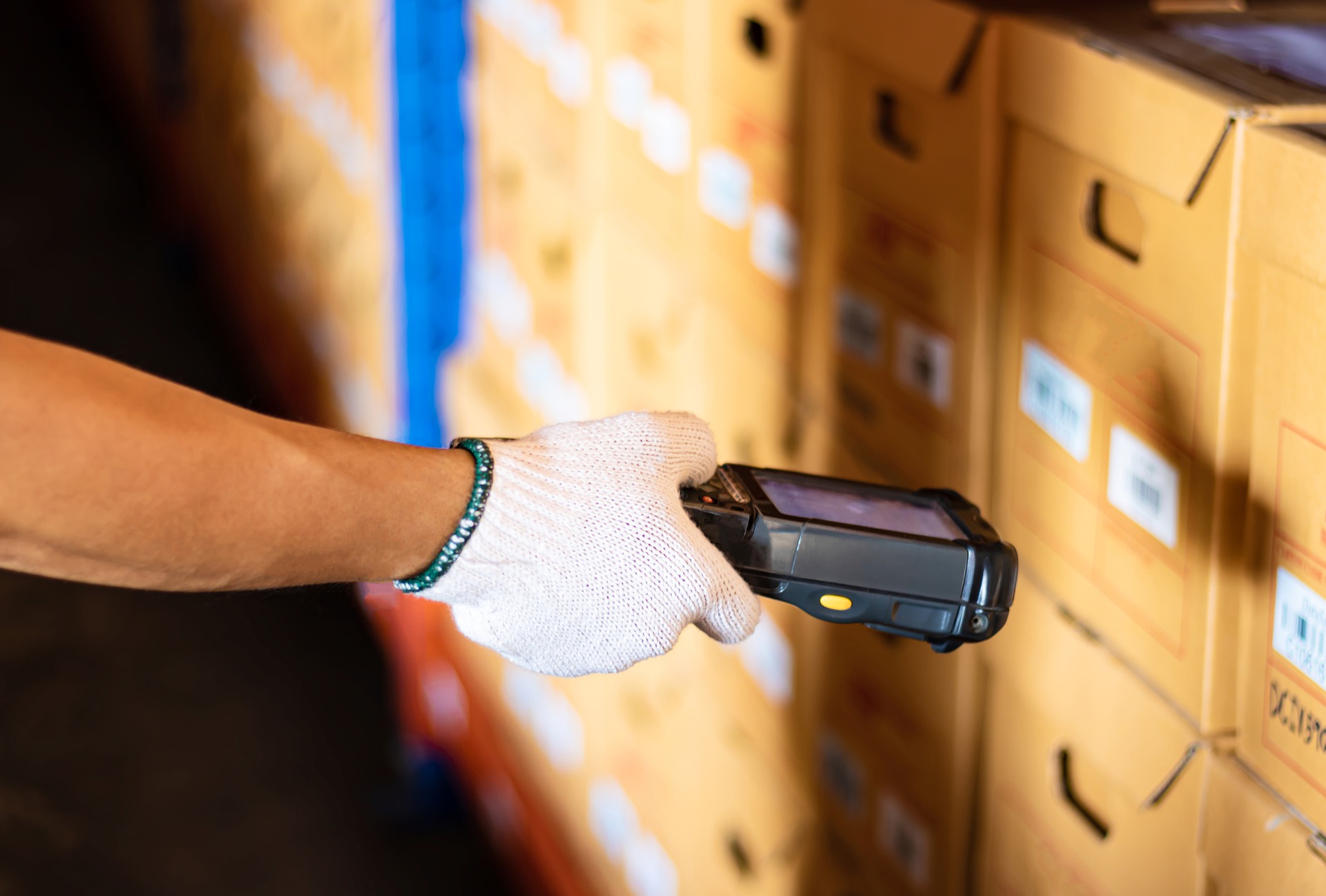
When you aim and click your scanner at the barcode, the sensor within the scanner detects reflected light from that little red light you see and generates an analog signal for decoding.
This is then translated by the decoder, is validated by the check digit if it’s correct, and then coverts that data into text.
That text then appears on your computer software and displays the information you decided should be represented by the barcode.
Scanners work very much like a keyboard hooked up to your PC. But, instead of using keys, your scanner is going to be what helps you input data into the computer.
5 quick tips for choosing a barcode scanner for your business

So, you’ve got your barcodes set up, it’s time to pick a scanner for your barcode inventory control.
Here are 5 tips to consider when choosing a barcode scanner for your business.
1. Floor-level manufacturing
Look at the actual floor of your shop floor manufacturing.
This means that if you opted for a cheap plastic scanner and were to drop it on your factory floor, would it survive the fall?
Manufacturers should consider purchasing rugged barcode scanners to avoid the risk of damaging the scanner when transporting it across your business.
2. Air quality in your warehouses
Do you have a dusty warehouse? Or is your workshop covered in sawdust or any other particles from your machinery?
You’ll want to look into the Ingress Protection (IP) rating of the scanners you shortlist, as this will indicate if the device will be able to survive extreme elements such as being covered in dust or submerged in water.
3. Lighting conditions of your manufacturing plant
Instinctively, you’d think that if you have a low level of lighting — possibly to protect light-sensitive material — it may interfere with your scanner.
However, the scanner works by reflecting the light from the barcode and analyzing the light and dark spots of the barcode. The issue is actually if you have bright lighting or sunlight that drenches your items.
It’s important to ensure that the scanner is going to work under your business’s lighting condition.
4. The needs of your employees
If your operators will be wearing gloves while on the floor and using the barcode scanner, then you should find a scanner that can accommodate these conditions, such as having larger keys, so it’s easier to use the scanner.
5. The type of barcodes you’ll be using
Will you be scanning barcodes from a distance or up close? If it’s from a distance, you’ll need to look into scanners with Advanced Long Range or Extended Range capabilities.
On top of that, if you’re using 1D or 2D barcodes you’ll need to think whether you’ll need to use laser scanners or even if the camera on your smart devices is enough.
Choosing a barcode system for inventory control
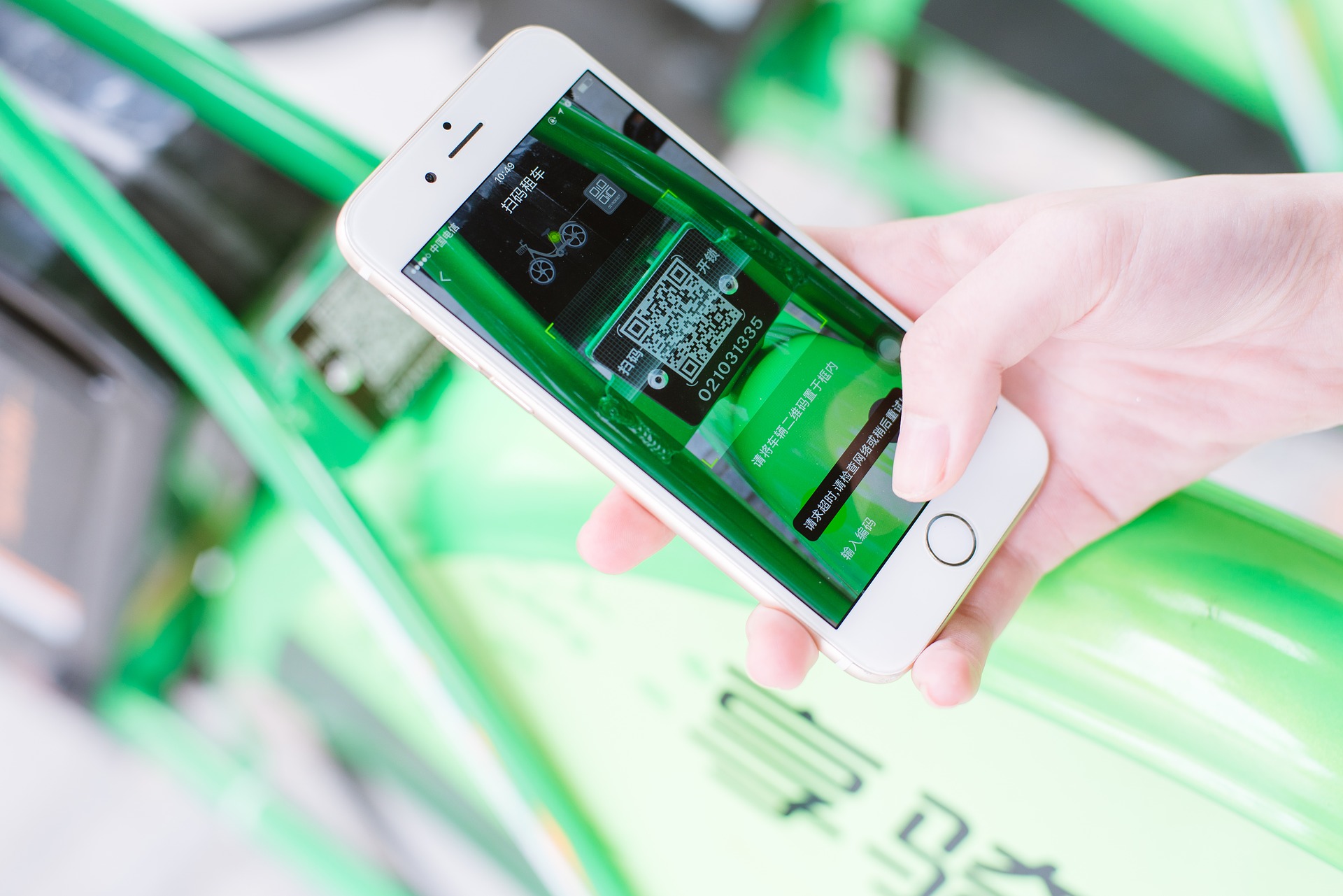
When you start the hunt for a barcode stock control system for your business, you can use software comparison sites such as Capterra or Software Advice to see what other manufacturers in your industry are using.
However, when compiling your shortlist for choosing software and scanners, be sure to follow this checklist to give you a head start:
- Can it create unique codes for your products and variants?
- Can it integrate with your other business systems?
- Can it scale alongside your business?
- Can you gather data with it?
- Can it support your manufacturing workflow?
- Can it support multiple locations?
- Can it support your inventory management methods?
By following this, you’ll surely be on the right path to finding the perfect barcode inventory control system.
But, how about we help you get started on this journey?
Download the ultimate guide to inventory management
A comprehensive ebook with everything you need to know about inventory management.
Katana barcode inventory control system
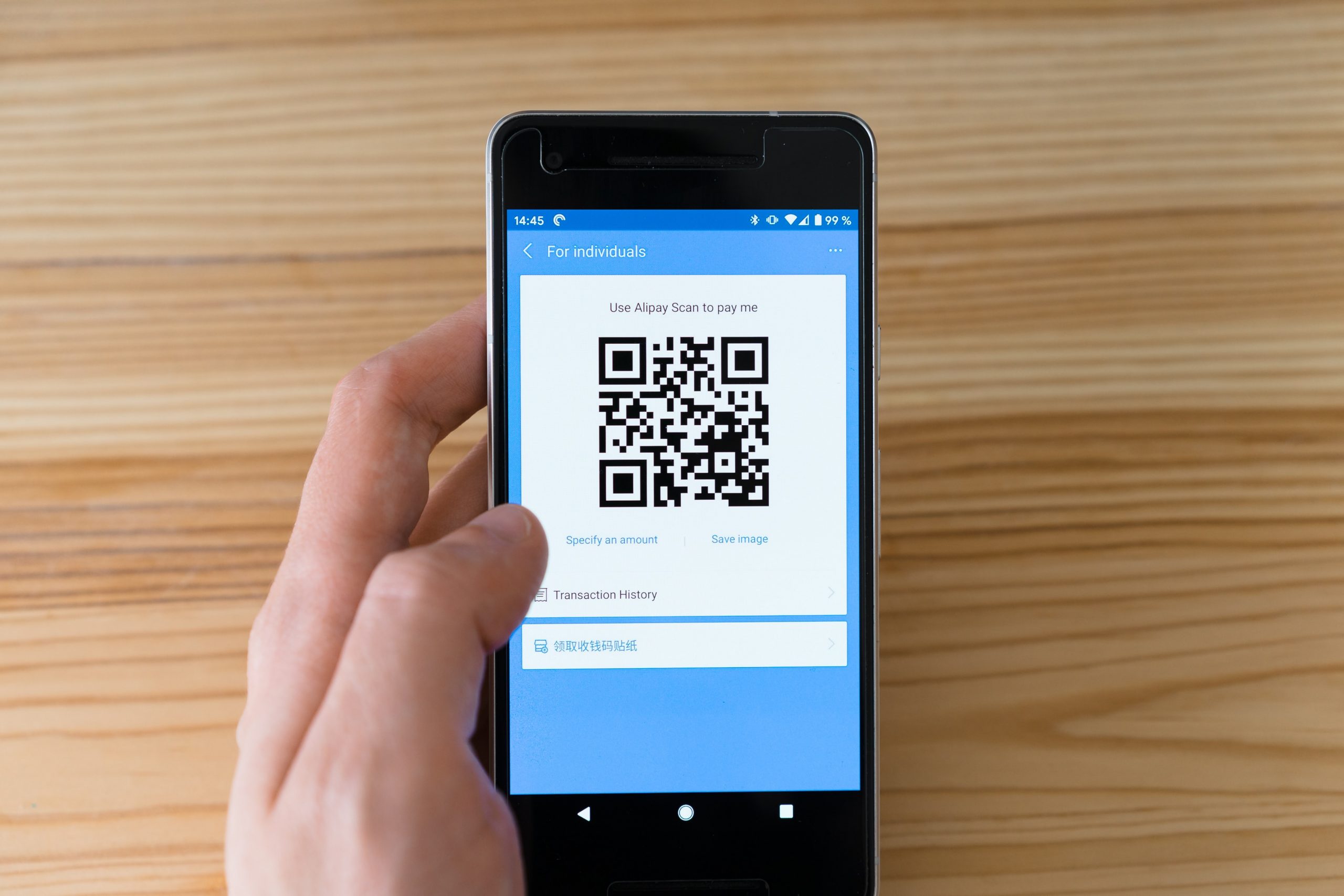
Katana Cloud Inventory is a scalable manufacturing platform for those starting to grow or larger manufacturers with warehouses and factories spread all over.
Katana supports a wide range of manufacturing processes and workflows and even comes with barcode scanning capabilities.
With Katana, you can improve your inventory management methods for handling raw materials and batches by:
- Assigning barcode numbers to inventory items
- Seeing barcode numbers within the Katana dashboard
- Identifying inventory items using barcodes
Katana allows customers to use barcode scanners for inventory control to help you and your employees easily keep up with your inventory methods, such as ABC inventory. Perform inventory tracking responsibilities quicker, reduce the chance for errors, and identify materials and items more easily.
Inventory control with barcode scanners is perfect for any manufacturer who works with:
- Pharmaceuticals
- Perishable inventories
- Electronics
- Large volumes of inventory
- Batch tracking
But Katana doesn’t stop there — it also gives you access to monitoring manufacturing, more control over the floor level with shop floor scheduling, and our API to customize your own integrations.
Don’t just take our word for it — see for yourself. Request a demo to see firsthand the benefits to be reaped with cloud inventory software and a barcode stock control system.
And that’s it for now.
Until next time, happy scanning.

Henry Kivimaa
Table of contents
Get inventory trends, news, and tips every month
Get visibility over your sales and stock
Wave goodbye to uncertainty with Katana Cloud Inventory — AI-powered for total inventory control